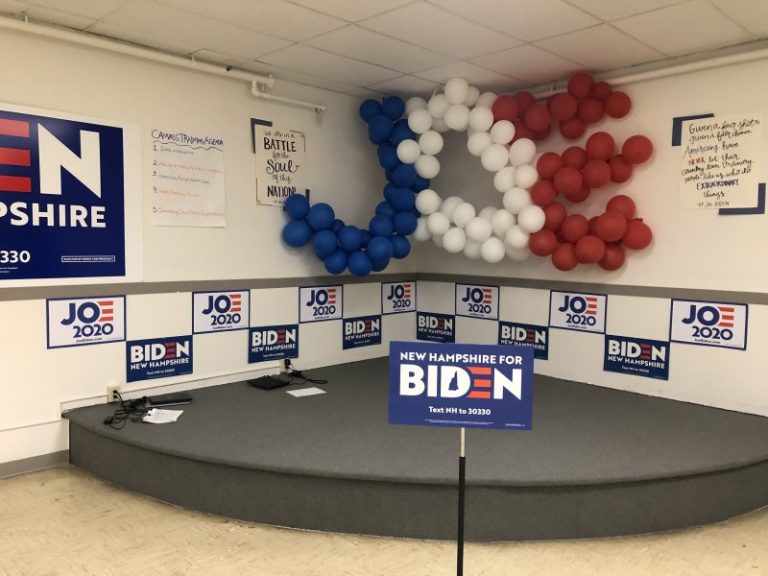If New Hampshire was any indicator, Joe Biden was never going to be president.
I was there in February 2020, a few days before the state’s Democratic Party primary, and the scene at Biden’s headquarters was grim. A smattering of volunteers. A largely empty voluminous space. Compared to the bustling scenes at the headquarters of Sens. Elizabeth Warren (D-Mass.) or Bernie Sanders (I-Vt.), the impression was of a candidate who was going to have a rough time on election night. And Biden did, coming in fifth.
Then came South Carolina. There, Biden romped, a function of the more moderate Democratic electorate. But it was also a function of the fact that the electorate was more heavily Black than in earlier-voting states, voters who tend to be more politically moderate. The establishment quickly rallied around Biden, worried about Sanders’s position, but Sanders’s position was also a function of jumping out to an early lead thanks to Whiter and more liberal states where he did better.
The Washington Post reported Thursday that Biden is now advocating an overhaul of the primary calendar, moving South Carolina to the top and booting Iowa — where inept management of the caucus in 2020 gave the party a black eye — out of position as one of the first states to vote. This is certainly a reflection of Biden’s own priorities, given what happened in 2020. But it is also a way to make the earliest Democratic voters look more like the Democratic Party.
That Black Americans are so heavily Democratic and that the party has an advantage with Asian and Hispanic voters as well means that the Democratic Party is much less heavily White than the Republican Party. It has been for a long time, in fact. In 1996, the Democratic Party was more diverse than the Republican Party is today.
As the years have passed, though, that has meant an increasing divergence between the composition of the electorate in the two earliest-voting primary states — Iowa and New Hampshire — and the party itself. In 1976, those two states (which voted first and fifth, respectively, according to useful history from Frontloading HQ) were between 6 points and 8 points Whiter than the party, as measured by the biennial General Social Survey. In 2020, they were between 18 points and 22 points Whiter.
Over time, the party has increased the clout of less-heavily-White states in the primary process. If you consider just the first five states to vote in each of the past 12 primaries (delineated with a line below), you can see that they were often heavily White, even as the party grew more diverse.
In the period from 1980 to 1992, only twice were states that were among the first to vote more diverse than the party itself. Each of the other 18 primaries or caucuses during that period were in states that were Whiter than the party. During that period, the first five states to vote were, on average, between 6 points and 12 points Whiter than the party.
(The chart above shows the approximate order of voting across the primaries. When states voted on the same day, they are listed in alphabetical order. At bottom, the coloration is used to show the approximate non-White density of the party, using either data from the General Social Survey or from Pew Research Center. Primary order is from Frontloading HQ.)
The reason this matters is clear. Primaries are winnowing processes, and candidates that are more popular with Black or Hispanic Democrats are disadvantaged when the first states to winnow the field are ones that have relatively few Black or Hispanic voters. Biden was able to weather the early contests, in part by doing a good job of setting expectations about how he would fare. But it was touch-and-go for a while.
I strongly oppose the President’s deeply misguided proposal for changes to the primary calendar. Make no mistake, New Hampshire’s law is clear and our primary will continue to be First in the Nation.
— Maggie Hassan (@Maggie_Hassan) December 2, 2022
Predictably, Iowans and New Hampshirites are not thrilled about this development. Sen. Maggie Hassan (D-N.H.) blasted it on Twitter, noting that there are challenges beyond simple will to consider. There are a lot of reasons for this objection, certainly, but one is uncomplicated: money.
Holding the first contests in New Hampshire and Iowa means a surge of spending on television ads, on staffing, and even on things like tours of famous political locations, as I encountered when I was there two years ago. But, then, this is the point: What people in New Hampshire want is not necessarily what the Democratic Party wants everywhere else.

